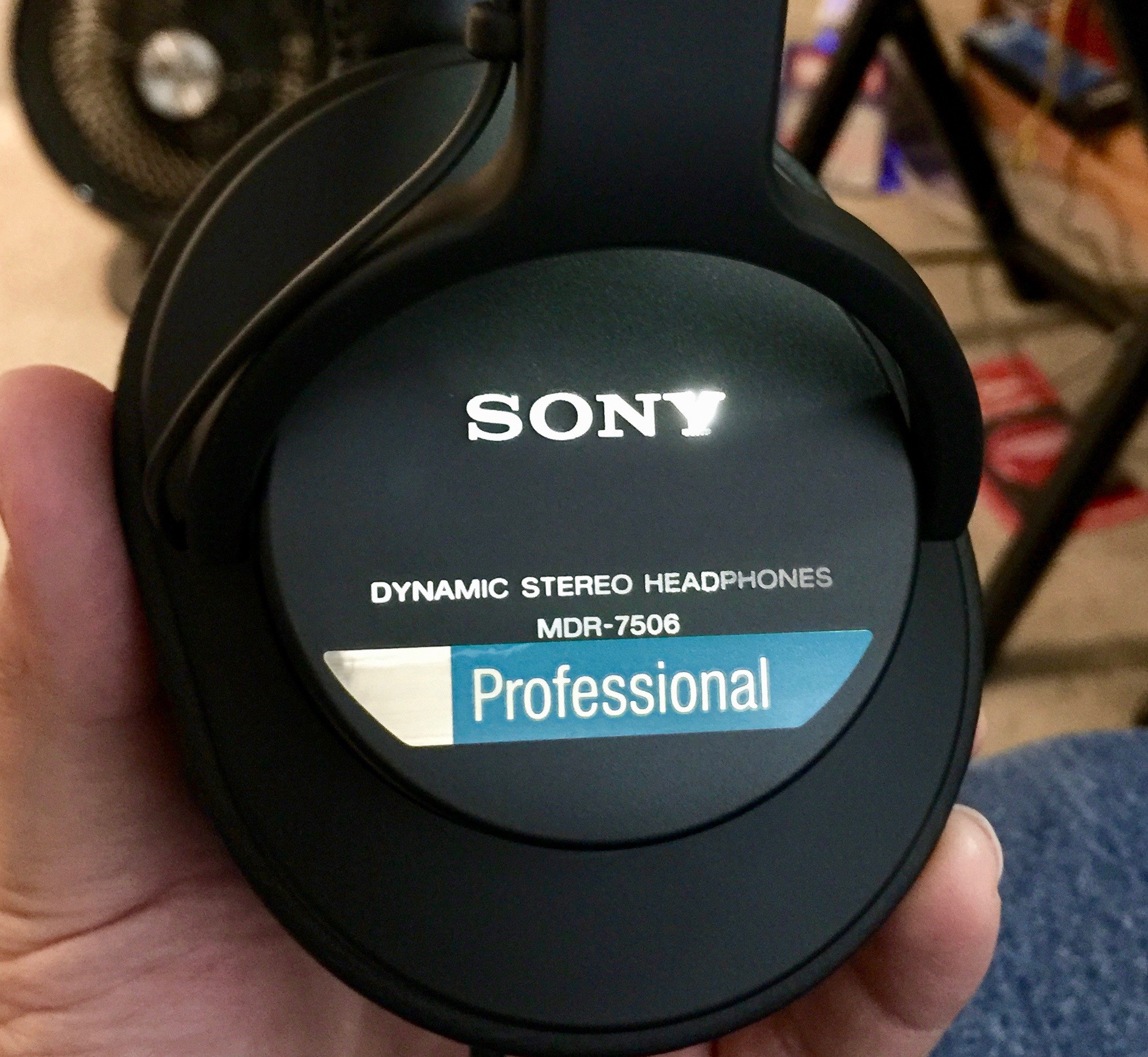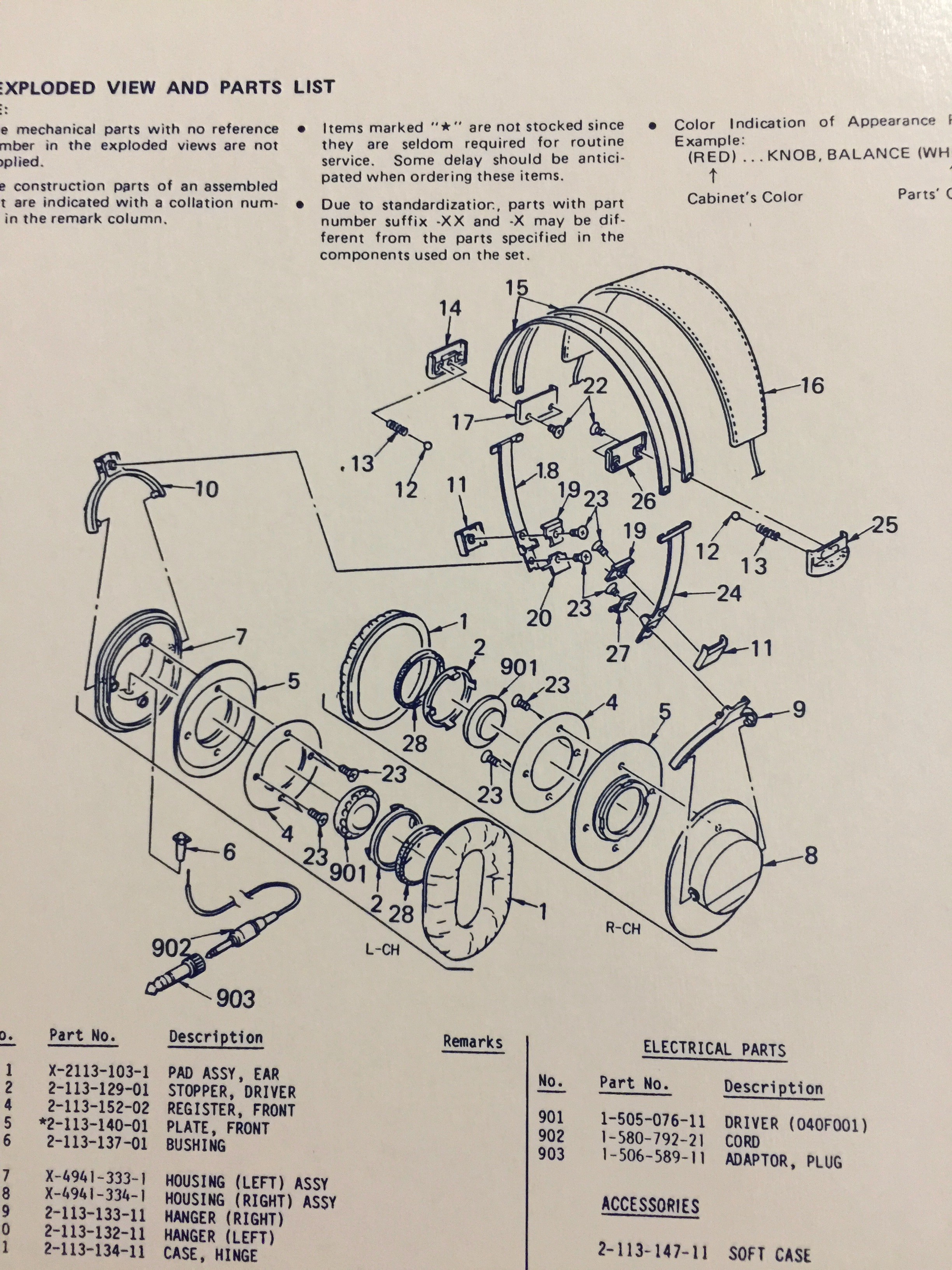Sometimes it?s 11pm and you think to yourself ?Hey self, I?ve never tried Prime Now even though my area has had it for quite some time. Oh look, they have headphones.?
And then you wake up and you have a pair of Sony MDR-7506 headphones.
Earlier this year, I reviewed the Sony MDR-V6, a legend that?s been in production since 1985. In that review I mentioned its cousin, the ever-so-slightly-tweaked MDR-7506, released in 1991 and also still in production. Endless debate rages online about whether they are appreciably different. Both headphones retail for less than $100. Often for about $79 or so. I hadn?t used the 7506 in a number of years, and I loved the V6 enough that I thought?why not check out the other one again just to be sure?
 The 7506 has a blue sticker that says ?Professional?. I like the red sticker of the V6 more, in part because it says ?for DIGITAL.?
The 7506 has a blue sticker that says ?Professional?. I like the red sticker of the V6 more, in part because it says ?for DIGITAL.?
Differences from V6
The most obvious differences between these two headphone models are cosmetic. The 7506 has blue stickers that say ?Professional? on them. They?re fine, and probably more subtle for use out of the home than the outlandish ?for DIGITAL? stickers on the V6?but man I really love those dumb red stickers on the older model.
The plug end on the 7506 is still metal, but it?s black instead of silver, and the plug-end is gold-plated instead of nickel-plated. You might see a teensy efficiency gain from this, but you?d have to be anal enough to be measuring power outputs and comparing them.
Surprisingly, the adjustment mechanisms on the 7506 are just a touch more clicky and solid than the already-satisfying adjustments on the V6. Fakes of this headphone are somewhat prevalent, and people have figured out how to tell if one is real just by the chunkiness of the size adjusters. For what it?s worth, while the 7506?s feel even more satisfying, the V6?s are still solid in this department.
Everything else about the look is the same. Both headphones have ?STUDIO MONITOR? written in hilarious silver letters across the top of the headband. Both have a coiled cord. Both fold down ?football style.?
But Do They Sound Different?
M?.Maaaaaaybe?
Look. It?s really hard to tell.
Unsurprising, since both headphones use nigh-identical parts and builds.
I sat down with both pairs and used the same player for volume matching, then loaded up a bunch of tracks I know very well. I think that the V6s sounded the tiniest bit more boomy in the bass?but it?s such a small difference I was second-guessing myself. Their overall signatures are so similar you?d have to be using measurement equipment to see differences?and that may also just be picking up differences due to manufacturing, given how precise headphones have to be.
They don?t sound different enough to warrant much of a discussion on the matter. Traditionally, it?s been accepted ?fact? that the V6s are a tiny bit more bass heavy, and that the treble prominence is slightly higher on the 7506 as a result. Some of my tests seemed to confirm this, but other songs sounded nigh-identical.
So?*Shrug*
It honestly doesn?t matter because these are still amazing for the price, no matter what stickers they have on the sides.
Sound
The 7506 has a consistent, detailed, studio-style response. Different frequency ranges are clearly audible, and if there are any hiss, compression, hum, or clipping issues in your audio, you?re going to hear them. That?s the nature of the beast here: it?s a headphone designed for production. It reveals all the details, and all the flaws.
This sort of sound is not to everyone?s taste. Some prefer a warmer, creamier, low-end focused response that?s easily listenable for hours. That?s the most popular signature on the market right now. Don?t take that to mean the 7506 doesn?t do bass: the low-end is precise and pleasantly deep. Still, this is not a sound that everyone will find relaxing, especially for long periods or at high volumes. These headphones are very sensitive, so don?t plug them into an amp and crank it all the way up. You will explode. You can power them just fine with anything that has a headphone jack.
Isolation is quite good for such a small and light headphone. I?m using them right now in a loud coffee shop without issue. It?s not as good as something with Active Noise Cancellation, but as passive isolation goes, it?s in the upper tier.
If you want a taste of what production audio sounds like/why some people are obsessed with chasing ?neutral sound,? the 7506/V6 is the perfect place to jump in. Its linear, accurate reproduction of the mid-range is particularly impressive, its lows are powerful, and its highs?are the definition of ?not-for-everyone.? But there?s a reason this headphone continues to sell tons of units every month to the pro world: It?s very good.
 The 7506 includes this fun schematic diagram, which shows you how to disassemble them. The V6 doesn?t include one in the box, but you can get it from Sony. It?s basically the same diagram.
The 7506 includes this fun schematic diagram, which shows you how to disassemble them. The V6 doesn?t include one in the box, but you can get it from Sony. It?s basically the same diagram.
Design/Build
If you want style, well, look elsewhere. The rest of the headphone market has you more than covered. That?s not to say I think these are ugly. In fact, I love their old-school look, and the fact that Sony never felt like updating it. They?re subtle enough on the head that you can wear them outside without feeling stupid, but people will know you?re wearing a tool instead of a fashion statement.
The build is tank-like, impressive for the price. The ear cups are solid aluminum. The headband is metal under the padding. The adjustment arms are metal. The cable end is metal. This has less plastic in it than many $300 headphones, and still manages to be lighter.
Makes you think, doesn?t it?
I prefer the look of the V6 thanks to its dumb red stickers, but I don?t hate the 7506. It probably looks less silly overall.
Comfort
The 7506 is an exceptionally comfy headphone, especially for something that looks like it won?t be comfy at all. The headband is plushly padded, and springy enough to provide a good clamp without any irritating pressure. It adjusts out quite large, and I have plenty of extra room even on my large head.
The ear pads are perhaps the coolest thing about this headphone. They?re racetrack-shaped, and they?re a hybrid on-ear/over-ear pad. The center part rests on your ear, providing the seal for proper audio response. The outer part rests around your ear, providing additional comfort and isolation.
In spite of looking cheap and thin and annoying, they?re quite comfy around the ear, featuring the best of both styles of pad. It?s easy to find replacements online if you don?t like the pads, but I think the stock ones are exceptional.
I still don?t know why every headphone doesn?t use a hybrid design like this. It?s like an on-ear, but super comfy. It?s like an over-ear, but smaller and less boxy.
Features/Extras
The headphones come with a small leatherette bag. Uh. They come with a 6.3mm adapter plug.
They fold down!
That?s it.
That?s all the features and extras.
***
The 7506 and V6 are exceptional-sounding, comfy, well-built headphones that regularly go for as low as $79. You simply can?t beat them on value. They don?t have style. They don?t have features. They don?t have a removable cable. They don?t have a phone remote. But they have everything that matters for an audio fan, or pros. They?re cheap enough that, in the extremely unlikely event they break, you won?t feel bad about buying a new pair.
Sony also sells a Japan-exclusive variant of these headphones called the CD900ST. It?s quite popular and I?ve heard many good things. I don?t know that I?ll ever check one out, because the base price is much higher, and combined with import charges it?s way way less of a good deal. But it exists for some reason. Just so you know.
 Really weird lighting on this one. A blast of sunlight came in here just as I hit the button, and I didn?t retake it.
Really weird lighting on this one. A blast of sunlight came in here just as I hit the button, and I didn?t retake it.


